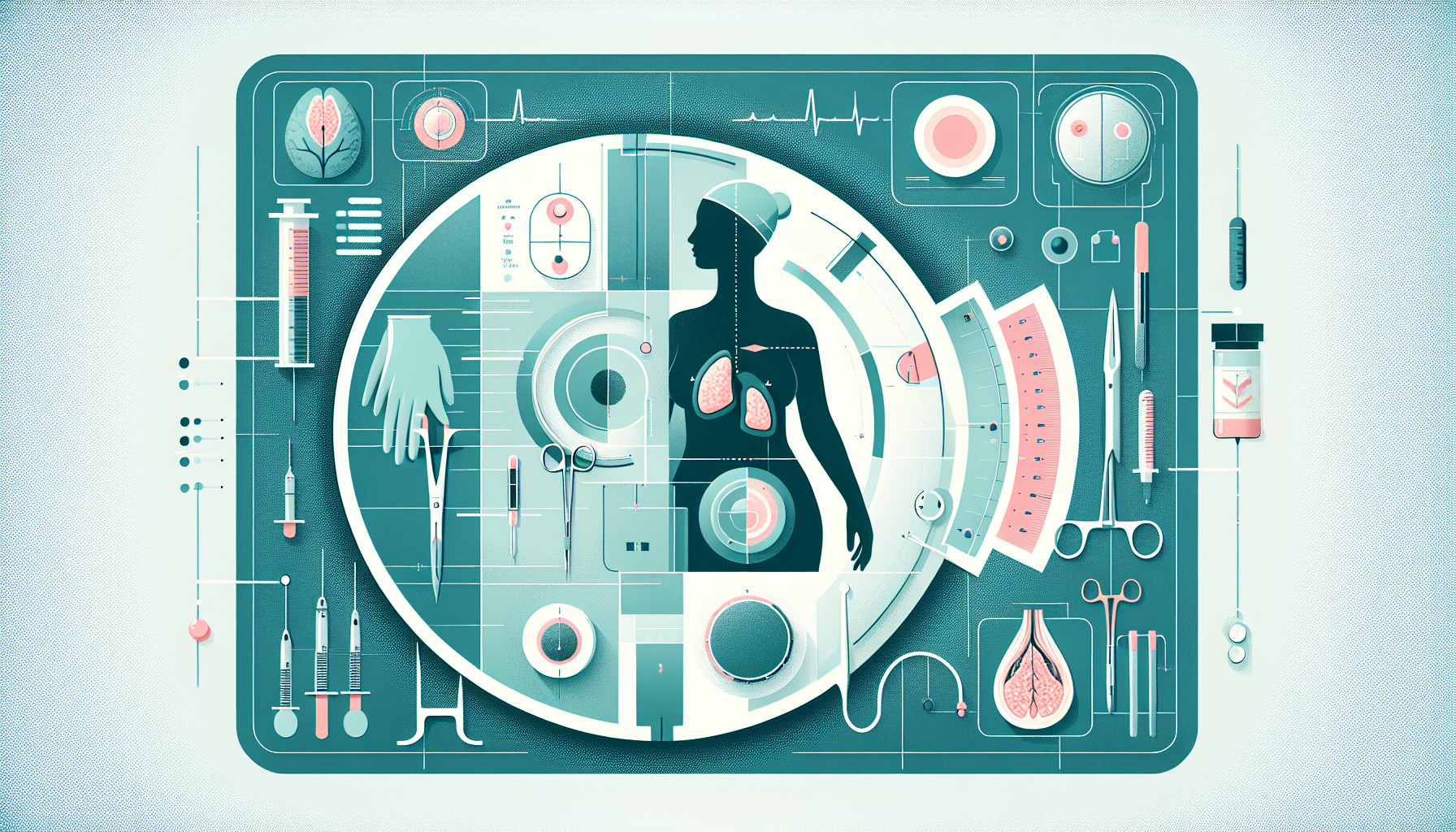Our Summary
This study looked at women with a specific genetic risk for breast cancer (BRCA) who underwent a certain type of mastectomy surgery. The researchers developed a new tool using MRI scans to measure the amount of breast tissue left behind after surgery. They were interested in whether this leftover tissue (what they call ‘residual breast volume’ or RBV) might be linked to worse outcomes for patients.
They studied data from 84 patients who had a total of 89 of these surgeries between 2006 and 2020. They looked at things like the patients’ body mass index (BMI), how many lymph nodes were involved in their cancer, and whether the surgery was done to treat existing cancer or to prevent it.
Their findings showed that a higher BMI was linked to more leftover breast tissue after surgery. They also found that when more lymph nodes were involved in the cancer, there was less leftover tissue. Interestingly, in surgeries done to prevent cancer, there was more leftover tissue than in surgeries to treat existing cancer.
However, the amount of leftover breast tissue didn’t seem to impact the chance of the cancer coming back in the local area. The recurrences that did happen were near the original tumor location. So, this new MRI tool could be useful in future research, but more work is needed to understand the impact of leftover tissue on cancer outcomes.
FAQs
- What is the purpose of the new tool developed to use with MRI scans after mastectomy surgeries?
- How does a patient’s BMI and the number of lymph nodes involved in cancer affect the amount of leftover tissue after a mastectomy?
- Did the study find a correlation between the amount of leftover breast tissue and the chance of breast cancer recurrence?
Doctor’s Tip
One helpful tip a doctor might tell a patient about mastectomy is to discuss the option of breast reconstruction with them. Breast reconstruction can help restore the appearance of the breasts after mastectomy and can have positive effects on a patient’s self-esteem and quality of life. It is important for patients to have a thorough discussion with their doctor about the different options available for breast reconstruction and to consider their personal preferences and goals before making a decision. Additionally, patients should be aware that breast reconstruction is a personal choice and not a necessary part of the mastectomy process. It is important to take the time to fully understand the risks, benefits, and potential outcomes of breast reconstruction before moving forward with the procedure.
Suitable For
Patients who are typically recommended mastectomy include those with a high genetic risk for breast cancer, such as those with BRCA mutations, as well as those with a history of breast cancer or a strong family history of the disease. Additionally, patients with large tumors, multiple tumors, or tumors that are difficult to completely remove with lumpectomy may also be recommended for mastectomy. Ultimately, the decision to undergo mastectomy is a personal one that should be made in consultation with a healthcare provider based on individual risk factors and treatment goals.
Timeline
- Before mastectomy:
- Patient is diagnosed with breast cancer or determined to be at high risk for developing breast cancer (such as carrying a BRCA gene mutation).
- Patient discusses treatment options with their healthcare provider, which may include mastectomy.
- Patient undergoes pre-operative preparations, such as imaging tests and consultations with surgeons and oncologists.
- Patient may undergo genetic testing to further determine their risk for breast cancer.
- Surgery is scheduled, and patient receives information on what to expect before, during, and after the procedure.
- After mastectomy:
- Patient undergoes the mastectomy surgery, where the breast tissue is removed.
- Post-operative recovery period begins, which may involve pain management, physical therapy, and emotional support.
- Patient may choose to undergo breast reconstruction surgery to restore the appearance of the breast(s).
- Patient follows up with their healthcare team for monitoring and any necessary treatments, such as chemotherapy or radiation therapy.
- Patient may experience physical and emotional changes, such as changes in body image, self-esteem, and sexuality.
- Long-term follow-up care is provided to monitor for any signs of cancer recurrence and to address any ongoing health concerns.
What to Ask Your Doctor
Some questions a patient should ask their doctor about mastectomy based on this study may include:
- How does my BMI affect the amount of leftover breast tissue after mastectomy?
- How does the number of lymph nodes involved in my cancer impact the amount of residual breast volume?
- Is there a difference in leftover breast tissue between surgeries done to prevent cancer versus surgeries done to treat existing cancer?
- How does the amount of residual breast volume after surgery affect the likelihood of cancer recurrence in the local area?
- Will I need additional imaging, such as MRI scans, to measure the amount of leftover breast tissue after my mastectomy?
- Are there any additional treatment options or considerations based on the amount of leftover breast tissue after surgery?
Reference
Authors: Kaidar-Person O, Faermann R, Polikar D, Cohen K, Bernstein-Molho R, Morrow M, Boersma LJ, Offersen BV, Poortmans P, Sklair-Levy M, Anaby D. Journal: Breast Cancer Res Treat. 2024 Nov;208(2):359-367. doi: 10.1007/s10549-024-07425-4. Epub 2024 Jul 9. PMID: 38980506
